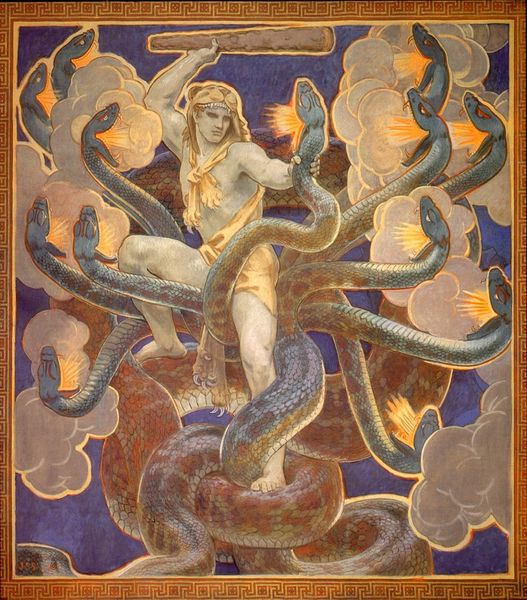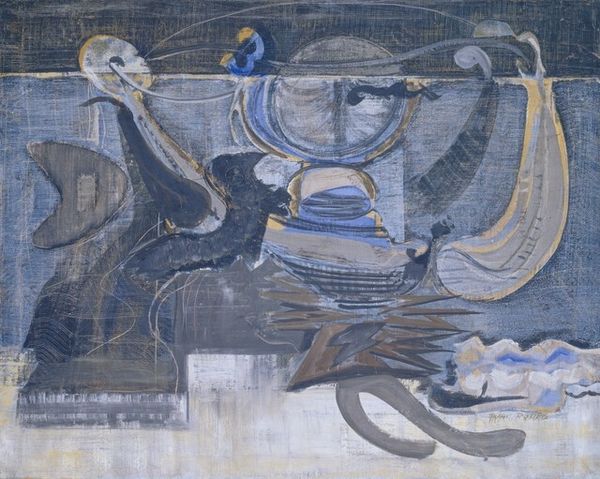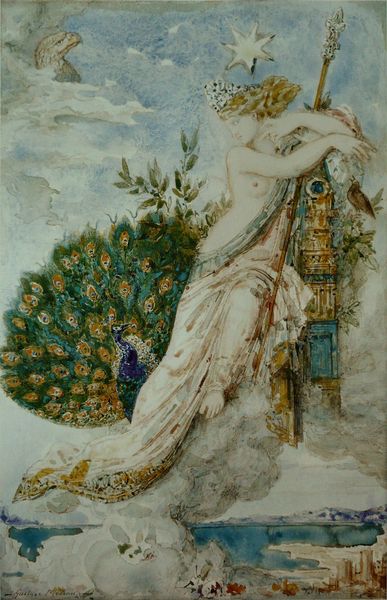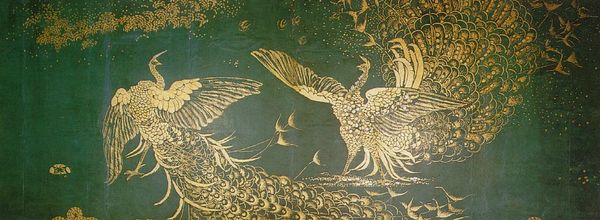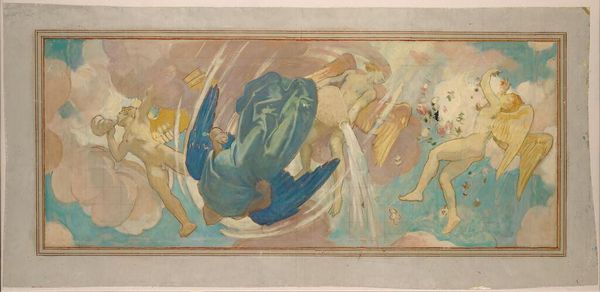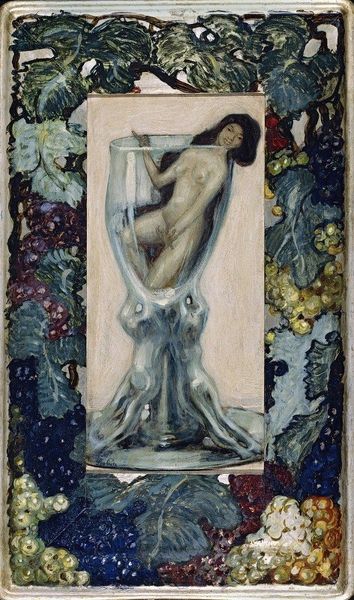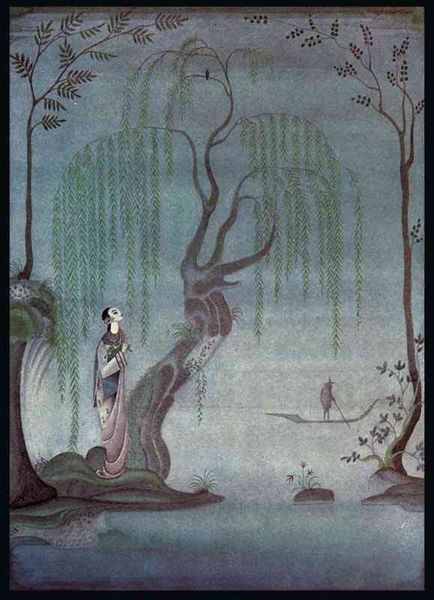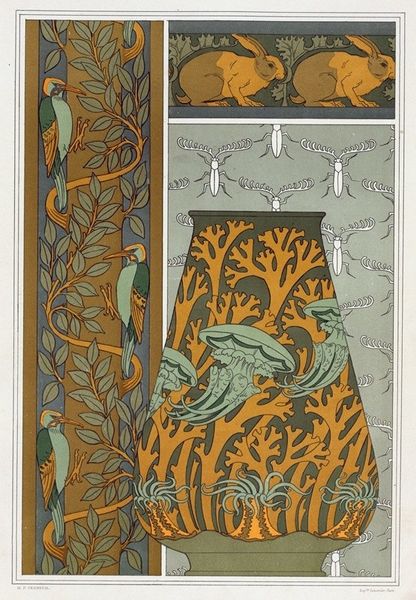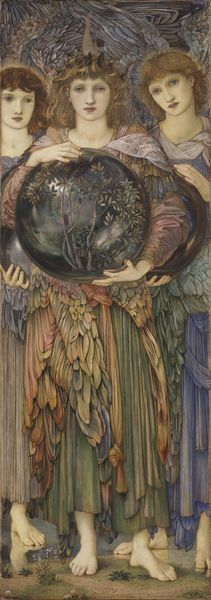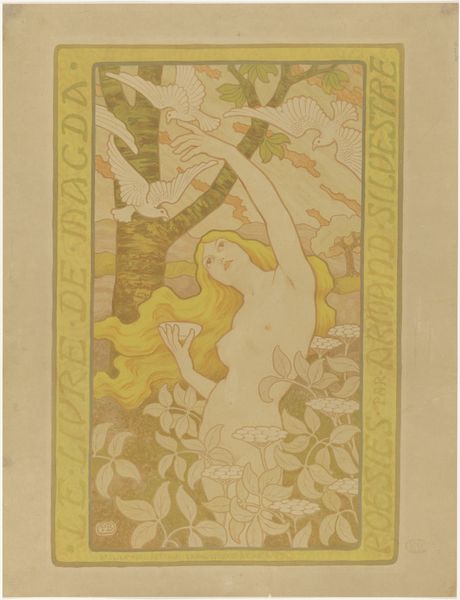
Dimensions: 68.5 x 164 cm
Copyright: Public domain
Curator: Standing before us is Edward Burne-Jones' "The Garden of the Hesperides," an oil painting completed in 1882, now residing here at the V&A. What strikes you first? Editor: The overwhelming flatness and the decorative nature of the composition! It's less about realism and more about creating a symbolic space, almost theatrical in its presentation. Curator: Exactly. Burne-Jones, associated with the Pre-Raphaelites, often favoured flattened perspectives, drawing inspiration from medieval art and tapestry. He certainly aims to evoke the feel of classical myth through this work. Note the figures of the Hesperides, attendants of the golden apples. They flank a serpentine dragon, Ladon. To me it feels dreamlike, but tinged with an underlying melancholy. What's your reading of it? Editor: Melancholy is interesting – I was thinking more of its historical context. Think of the Victorian fascination with classical antiquity; it wasn't just aesthetic. For a class-obsessed nation like Victorian England, associating with legendary, immortal mythological tales – particularly about hero's such as Hercules' triumph with his theft of these life-giving golden apples – might have had political overtones. It certainly cemented Britain's global authority. Curator: The fruit, rendered more as visual motif than actual fruit, does hint at eternal reward, a desire which, as we know from classical drama and indeed Christianity, comes at great cost. Looking closer, it is striking how the figures blend classical idealism with medieval romanticism in their execution. It is a work of powerful visual metaphor, with so many art historical references blended. Editor: Absolutely. It reflects how the Victorian period negotiated history and narrative. By revisiting and reimagining myths through this visual lens, they gave authority to new sets of cultural beliefs. Curator: What do you make of that pervasive gold finish in the composition and background? Editor: As the Victorians were rapidly industrializing and accruing colonial riches, the pervasive use of gold certainly seems reflective of how art and aesthetic pursuits were linked with global capital at this time. A kind of aesthetic ideology being materialized in Burne-Jones’ flat but shimmering visual economy. Curator: Very insightful. It demonstrates so many art historical periods feeding off the energy and anxiety of their respective present-day contexts, creating a multilayered artwork like this! Editor: Yes, certainly a dialogue across ages is evoked here in how these mythologies take new life within contemporary political ideologies.
Comments
No comments
Be the first to comment and join the conversation on the ultimate creative platform.
